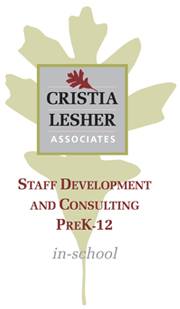Building Powerful Math Understanding, PreK-2: Manipulatives and the Common Core
Available as a Summer Institute by Tom Schersten
 Location: This new 3-5 day Summer Math Institute is available to come to your district.
Location: This new 3-5 day Summer Math Institute is available to come to your district.
Audience: PreK-2 teachers, administrators, and paras; general and special education
Institute Leader: Tom Schersten has a gift for helping PreK-2 educators become comfortable and confident teaching the Common Core for Math. He succeeds with teachers who love math as well as those who might even hate it. He does this with the rigor of a mathematician, the gentleness of a kindergarten teacher, and the high expectations of the CCSS. Tom says, “We can combine high standards with ‘humane’ math instruction. We have to remember, not everyone learns math the same way. We’ve created a nation of math phobics by failing to respond to that simple truth. My aim is to help teachers right that wrong, for the sake of all our children.” Tom taught in K-8 classrooms for 20 years, including 14 years involving kindergarten through second grade, in remedial, regular, and accelerated settings.
A word about interlocking cubes, pattern blocks, and the Common Core: The CCSS expects students to demonstrate their understanding through math modeling. Interlocking cubes and pattern blocks are perfect tools for this. Their generous use invites many more young learners into math than traditional teaching methods ever could. Learn how to use them to differentiate math instruction in a lively and deeply effective way.
CONTENT: This is how participants will spend their time during this exciting 3-5 day training:
- Demystifying the CCSS for your grade and making it your own.
Teachers will catapult their understanding of CCSS expectations to new levels. This will be done through comprehension exercises designed both for teachers who feel they grasp math as well as those who don’t. Participants will have the distinct pleasure of experiencing what it feels like to have math taught to them the way they learn best. - Understanding Common Core Math Content so well that you can teach math understanding, not just procedures.
While mastering procedures is necessary, it is not the same as understanding the math. The Common Core expects BOTH. Therefore, we no longer can place primary focus on memorization of paper-and-pencil procedures carried out on worksheets.Participants will put their hands on interlocking cubes and pattern blocks in order to UNDERSTAND the math in the Critical Areas of the Common Core that are selected for this training. (See Tailoring This Institute for Your Teachers, below.)Then they will learn how to use these same manipulatives to dynamically teach their students to understand the math for themselves. - Learning how to use Common Core Math Practices to better teach math to all your students.
Use of manipulatives such as interlocking cubes and pattern blocks is the single most powerful form of math modeling for PreK-2 learners. Modeling is a math practice expected in the Common Core.Participants will also learn how to use questioning strategies and differentiated instruction to effectively teach every one of their students. - Experiencing sample lessons you can replicate back in your classroom in the fall.
Tom will demonstrate exciting math lessons that captivate young minds. These lessons will be ideal for replication back in the classroom. Again, emphasis will be on the content that is essential to the participants in the institute.Teachers will feel ready for math instruction in the fall in a whole new way!
TAILORING THIS INSTITUTE TO YOUR TEACHERS: Institutes of 3 – 5 days are designed specifically for the requesting school or district in terms of the grade levels involved, the number of days encumbered, and the specific standards focused on during the week, many of which will be related to the Critical Areas of the Common Core at each grade level.
Here are Tom’s condensations of the Critical Areas identified for grades PreK through 2:
Pre-Kindergarten (Massachusetts Common Core only):
- developing an understanding of whole numbers to 10, including numeral and word representations, concepts of one-to-one correspondence, counting, cardinality (the number of items in a set), and comparison (>, <, or =)
- exploring shapes, the spatial relationships among them, and identifying their names and attributes, including length, area, and weight, comparing shapes, creating 2- and 3-dimensional shapes using manipulatives, recycled items, and play materials, sorting and classifying objects by more than one attribute, and developing a sense of number as quantity
Kindergarten
- using numbers to represent quantities and to solve quantitative problems
- describing the physical world using geometric ideas and naming basic 2-D and 3-D shapes
Grade 1
- developing strategies for adding and subtracting whole numbers and relating counting to addition and subtraction
- developing, discussing, and using efficient, accurate, and generalizable methods to add within 100 and to subtract multiples of 10 and thinking of 2-digit numbers as composed of tens and ones
- developing an understanding of the meaning and processes of measurement
- composing and decomposing plane and solid figures
Grade 2
- extending the understanding of the base-ten system by counting by ones, tens, and hundreds and extending the understanding of place value to four digits
- developing fluency with addition and subtraction within 100 and solving problems within 1000 by applying their understanding of models for addition and subtraction
- recognizing the need for standard units of measure (centimeter and inch) and using rulers and other measurement tools
- describing and analyzing shapes by examining their sides and angles and developing a foundation for understanding area, volume, congruence, similarity, and symmetry

